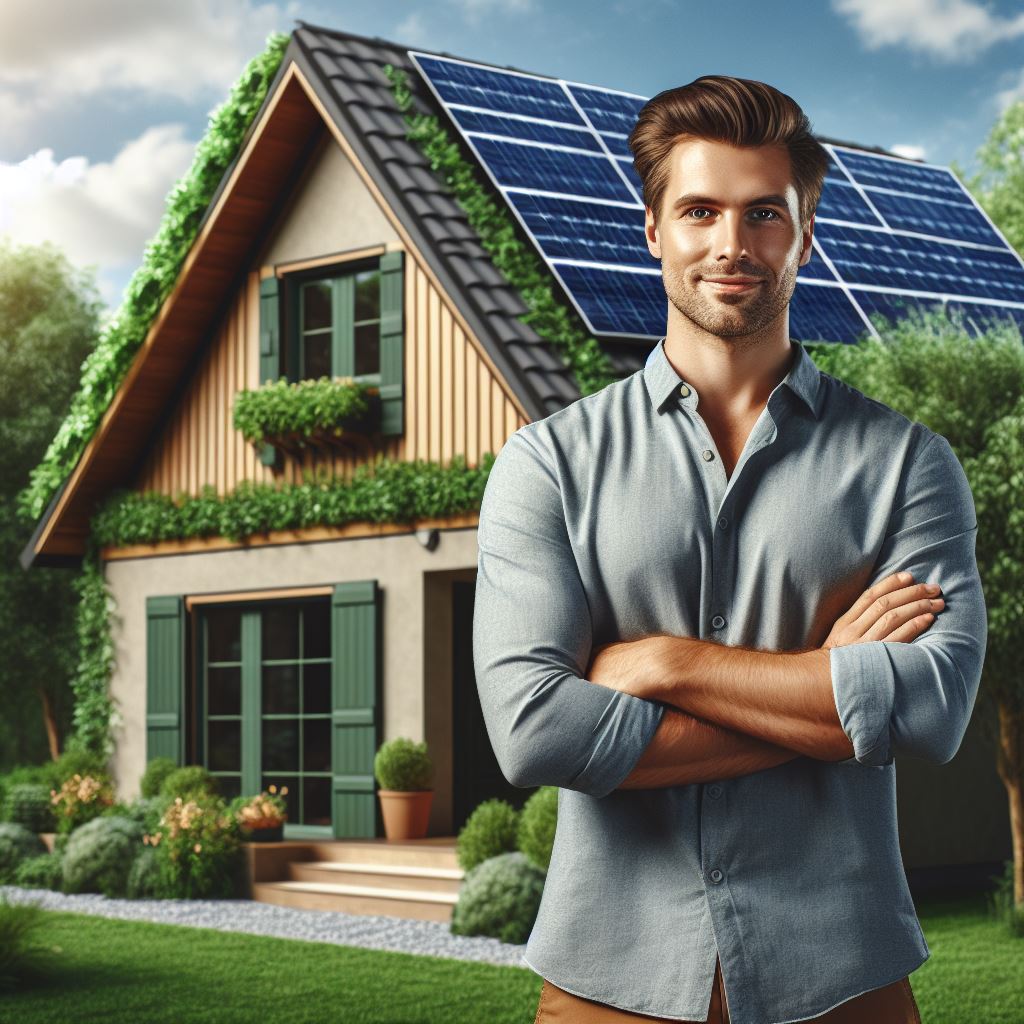Introduction
Title: Embracing Green Real Estate: A Buyer’s Essential Guide
Welcome to the realm of green real estate. Discover sustainable living with every property.
Green real estate integrates eco-friendly practices, from design to daily operations.
Consider the impact of your real estate choices on the environment.
Choosing sustainable options ensures a healthier planet and future generations.
Every decision counts; opt for energy-efficient homes, reducing carbon footprints.
From renewable energy sources to eco-friendly materials, explore sustainable features.
Embrace green building certifications like LEED and Energy Star for eco-assurance.
Sustainable homes not only benefit the environment but also your health and well-being.
Lower utility bills and increased property value are perks of eco-friendly choices.
Join the movement towards a greener future through conscious real estate decisions.
In this post, we’ll navigate the world of green real estate, empowering your choices.
Prepare to embark on a journey of environmentally-conscious home ownership.
Benefits of Green Real Estate
Green real estate is becoming increasingly popular among homebuyers due to its numerous benefits.
One of the major advantages of green real estate is lower utility costs and energy savings.
With energy-efficient features such as solar panels and LED lighting, homeowners can significantly reduce their monthly bills.
Not only does green real estate save money, but it also creates a healthier indoor environment.
The use of non-toxic materials and proper ventilation systems ensures that occupants are breathing clean air, reducing the risk of respiratory illnesses.
Moreover, green real estate helps in reducing the carbon footprint.
By incorporating renewable energy sources and efficient insulation, homes can minimize their impact on the environment.
Here are some key benefits of green real estate in detail:
Lower utility costs and energy savings
Green homes are designed to be energy-efficient, reducing the consumption of electricity and water.
This leads to lower utility bills and substantial savings over the long term.
Investing in energy-efficient appliances and using renewable energy sources such as solar power further decreases energy expenses.
Healthier indoor environment
Green homes prioritize the use of non-toxic materials, such as low-VOC paints and formaldehyde-free insulation.
These materials minimize exposure to harmful chemicals, improving indoor air quality and promoting a healthier living environment.
Additionally, proper ventilation systems ensure the circulation of fresh air, reducing the risk of mold and allergens.
Reduced carbon footprint
Green real estate aims to minimize its environmental impact by implementing sustainable features.
For instance, solar panels generate clean energy, reducing dependence on fossil fuels and mitigating greenhouse gas emissions.
Efficient insulation and windows help conserve energy by reducing the need for heating and cooling systems, further reducing carbon emissions.
Enhanced resale value
Green homes are in high demand due to their energy-saving features and environmental benefits.
This resale value can provide homeowners with a significant return on investment.
Additionally, green homes often hold their value better compared to traditional homes, making them a smart long-term investment.
Access to incentives and rebates
Many governments and utility companies offer incentives and rebates to encourage homeowners to adopt sustainable practices.
These incentives can include tax credits, cash rebates, or reduced interest rates for green home improvements.
Taking advantage of these programs can further enhance the financial benefits of owning a green home.
Contribution to a sustainable future
By choosing green real estate, homeowners contribute to a more sustainable future.
The collective adoption of green practices reduces the strain on natural resources, preserves ecosystems, and helps combat climate change.
Choosing green real estate is an active step towards a more sustainable and eco-friendly lifestyle.
In essence, green real estate offers significant benefits for homebuyers.
From lower utility costs and energy savings to a healthier indoor environment and reduced carbon footprint, green homes provide financial, health, and environmental advantages.
Additionally, green properties have higher resale value, access to incentives, and contribute to a sustainable future.
So, if you’re considering buying a home, green real estate is a smart and responsible choice.
Read: Sustainable Landscaping Ideas
Important Factors to Consider
Finding the perfect green real estate requires careful consideration of several important factors.
Not only should the property be aesthetically pleasing and meet your personal needs, but it should also align with your desire for a more sustainable lifestyle.
In this section, we will discuss some key factors to consider when buying green real estate.
Location
Location plays a crucial role in determining the sustainability of a property.
Look for properties that are in close proximity to public transportation and amenities. This minimizes the need for private vehicles, reducing carbon emissions.
Additionally, accessibility to green spaces and parks allows for a healthier and more environmentally friendly lifestyle.
Energy Efficiency
Energy efficiency is another critical factor to consider. Check the types of insulation used in the property.
Proper insulation ensures that the property retains heat in the winter and stays cool in the summer, reducing the need for excessive heating or cooling.
Additionally, consider the efficiency of the appliances and HVAC systems installed in the property.
Energy-efficient appliances and systems not only reduce your carbon footprint but also lead to cost savings in the long run.
Moreover, the presence of renewable energy sources, such as solar panels or wind turbines, further enhances the property’s sustainability.
Water Conservation
Water conservation is an essential aspect of green real estate. Look for properties with low-flow fixtures, such as low-flow toilets and showerheads.
These fixtures help reduce water consumption without compromising on functionality. Additionally, consider properties that have rainwater harvesting systems.
These systems collect rainwater, which can be used for various purposes, such as watering gardens or flushing toilets, further reducing reliance on traditional water sources.
Materials and Construction
Sustainable materials and construction practices are also crucial considerations.
Check if the property has used sustainable materials, such as recycled or locally sourced materials, in its construction.
Additionally, inquire about the waste management practices employed during the construction process.
Proper waste management ensures that construction waste is minimized and recycled whenever possible.
Certifications and Labels
Lastly, certifications and labels provide reassurance regarding the property’s sustainability.
Look for properties with LEED certification, as this indicates that the property meets high environmental standards.
Moreover, properties with an ENERGY STAR rating have been evaluated for their energy efficiency.
Other green building certifications, such as Green Globes or BREEAM, further demonstrate the property’s commitment to sustainability.
In fact, when buying green real estate, it is essential to consider factors such as location, energy efficiency, water conservation, materials and construction, and certifications.
By prioritizing these factors, you can find a property that not only meets your needs but also aligns with your environmental values.
Read: Water Efficiency in Modern Homes
Finding Green Real Estate
When it comes to finding green real estate, there are several avenues you can explore to ensure you make an environmentally friendly choice.
Conducting research online
- Start by utilizing online resources to gather information on green real estate options.
- Look for websites that specialize in sustainable properties and provide comprehensive listings.
- Make use of search filters to narrow down your options based on location, size, and specific green features.
- Take advantage of virtual tours and photos to get a better idea of the properties that interest you.
Working with a real estate agent specializing in green properties
- Consider collaborating with a real estate agent who has expertise in green properties.
- These professionals can guide you through the process and offer valuable insights.
- They will have knowledge of local green initiatives, certifications, and incentives.
- A specialist will be able to match your preferences with available green properties on the market.
Attending sustainability-focused home expos or events
- Don’t underestimate the power of attending sustainability-focused expos and events.
- These gatherings often feature vendors and experts showcasing the latest in green home technologies.
- Participating in these events can provide you with valuable networking opportunities.
- You can connect with builders, architects, and homeowners who have already embraced green living.
Finding green real estate requires a proactive approach, but with the right resources and guidance, you can make an informed and sustainable choice for your next home.
Read: LEED Certification: A Deep Dive

Green Financing and Incentives
Exploring Green Mortgage Options
Green mortgages reward homeowners by providing financial benefits for environmentally friendly choices.
These mortgages offer lower interest rates or other favorable terms when purchasing energy-efficient homes.
Green mortgages can also provide funds for energy-efficient upgrades or renovations to existing properties.
Homebuyers should research and compare different green mortgage options to find the best fit for their needs.
Working with knowledgeable lenders who specialize in green financing can help navigate the process more effectively.
Federal tax credits for energy-efficient homes
The federal government offers tax credits to encourage the purchase and construction of energy-efficient homes.
These tax incentives can help offset the initial costs of energy-efficient features, such as solar panels or insulation.
Homeowners can claim these credits on their federal tax returns, reducing their overall tax liability.
It is important to research and understand the specific requirements and limitations of each tax credit.
Consulting with a tax professional can ensure that homeowners maximize their eligibility for these credits.
State and local incentives for green real estate purchases
Many states and local governments offer additional incentives for purchasing green real estate.
These incentives can vary greatly depending on the location and specific green initiatives in place.
Some incentives may include property tax exemptions or reductions for energy-efficient homes.
Others may provide grant programs or rebates for renewable energy installations or upgrades.
Researching state and local programs can help homeowners identify additional financial benefits.
Benefits of green financing and incentives
- Green financing and incentives not only provide financial advantages but also promote sustainable living.
- Energy-efficient homes contribute to a healthier and cleaner environment by reducing carbon emissions.
- Lower energy consumption leads to cost savings on utility bills in the long run.
- Green financing can increase the affordability of energy-efficient properties, making them more accessible to buyers.
- Taking advantage of federal, state, and local incentives can significantly reduce the overall cost of green real estate.
Tips for maximizing green financing and incentives
- Research and understand the requirements and limitations of available green financing options.
- Consult with lenders experienced in green financing to explore the best mortgage options.
- Keep track of federal, state, and local incentives, as they may change over time.
- Document all eligible green improvements and upgrades to ensure tax credit eligibility.
- Work with a tax professional to navigate the complex process of claiming tax credits.
Green financing and incentives play a crucial role in promoting the purchase of energy-efficient homes.
Exploring green mortgage options, federal tax credits, and state/local incentives can provide significant financial benefits.
Understanding the requirements and limitations of these programs is essential for maximizing their advantages.
Investing in green real estate not only contributes to a sustainable future but also offers long-term cost savings.
Leveraging green financing and incentives can help buyers make environmentally conscious choices while saving money.
Read: Smart Homes for Sustainability
Potential Challenges and Limitations
In the world of green real estate, there are potential challenges and limitations that buyers should be aware of.
These obstacles can make the process more complicated and require careful consideration.
Key challenges and limitations that buyers may face
Here are some of the key challenges and limitations that buyers may face when looking for green properties:
Higher upfront costs
One of the biggest challenges of green real estate is the higher upfront costs associated with sustainable features and technologies.
Green properties often require specialized building materials, energy-efficient appliances, and renewable energy systems, which can be more expensive to install compared to traditional options.
Limited availability of green properties in certain areas
Another limitation is the limited availability of green properties in certain areas.
While eco-friendly homes are becoming more popular, they may still be scarce in some locations.
Buyers may need to be patient and persistent in their search for the right green property.
Balancing between affordability and sustainability
Finding a balance between affordability and sustainability can be challenging.
Some green features may have a higher initial cost but yield long-term savings on energy bills.
Buyers need to consider their budget and weigh the potential financial benefits of eco-friendly options.
Benefits of buying green real estate
Despite these challenges and limitations, there are several benefits to buying green real estate. Here are some advantages that make the extra effort worthwhile:
- Energy and cost savings: Green properties are designed to be energy-efficient, resulting in lower utility bills and long-term cost savings.
Features like solar panels, energy-efficient windows, and insulation help reduce energy consumption and expenses. - Health and well-being: Green homes prioritize indoor air quality and use non-toxic materials, creating a healthier living environment.
For individuals with allergies or respiratory conditions, these features can make a significant difference in their quality of life. - Environmental impact: By choosing a green property, buyers can reduce their carbon footprint and contribute to a more sustainable future.
They actively support environmental conservation by using renewable energy sources and reducing resource consumption.
Tips to navigate the challenges and limitations of green real estate
To navigate the challenges and limitations of green real estate, buyers should consider the following tips:
- Work with a knowledgeable real estate agent: An experienced agent with expertise in green properties can help buyers find suitable options and guide them through the buying process.
- Research local incentives and programs: Many cities and states offer incentives, grants, or tax credits for green home buyers.
Researching these opportunities can help offset some of the upfront costs. - Consider retrofitting existing properties: If finding a green property proves challenging, buyers can consider retrofitting an existing home to make it more energy-efficient.
This can be a cost-effective option that still provides many of the benefits of a green property.
In general, while green real estate may present challenges such as higher upfront costs and limited availability, the benefits outweigh the drawbacks.
Buyers can enjoy energy and cost savings, improved health and well-being, and contribute to a sustainable future.
By working with knowledgeable professionals and exploring incentives, buyers can overcome these challenges and make the most of green real estate opportunities.
Find Out More: San Francisco: 2024 Market Shifts
Conclusion
The interest in green real estate is rapidly increasing as more people recognize the benefits it offers.
Throughout this guide, we have highlighted the numerous advantages of investing in sustainable properties and the factors to consider when buying them.
From energy and cost savings to improved indoor air quality and a reduced carbon footprint, green real estate offers both financial and environmental benefits.
Buyers should prioritize sustainability when making real estate decisions to contribute to a more sustainable future.
By choosing green buildings, buyers can create healthier homes, save money on utility bills, and reduce their impact on the environment.
It is essential to consider factors such as energy efficiency, renewable energy sources, and certifications like LEED or ENERGY STAR.
As the demand for green real estate continues to grow, so does the availability of sustainable options in the market.
With the integration of sustainable practices becoming more widespread, potential homebuyers have an excellent opportunity to contribute positively to the environment while enjoying long-term benefits.
Embracing green real estate benefits both the individual buyer and the planet as a whole.
It is our responsibility to prioritize sustainability and make environmentally conscious choices when it comes to purchasing real estate.
Let us build a greener future, one sustainable property at a time.



